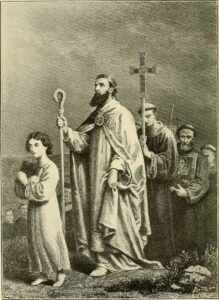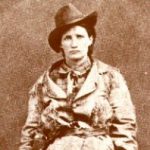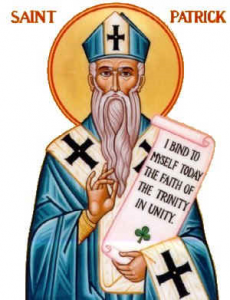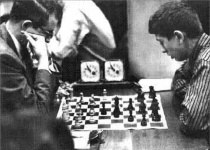luck
 Today is Saint Patrick’s Day, but I don’t believe in Luck. I believe in blessed. Saint Patrick’s Day celebrations are all about “the luck” of the Irish. I’m not real sure where that idea got started, and I know that it’s all in fun, but luck isn’t real, and blessing is. Saint Patrick was born in Britain, but he was kidnapped by Irish pirates at 16 and enslaved for six years. They took him to Ireland where he was enslaved and held captive for six years. Patrick writes in the Confession that “the time he spent in captivity was critical to his spiritual development.” Often it is when we are our lowest time, that we finally look up and find the Lord. He explains that “the Lord had mercy on his youth and ignorance and afforded him the opportunity to be forgiven his sins and convert to Christianity.” While Saint Patrick was held in captivity, he was assigned to work as a shepherd, but while there, he also strengthened his relationship with God through prayer, eventually leading him to convert to Christianity.
Today is Saint Patrick’s Day, but I don’t believe in Luck. I believe in blessed. Saint Patrick’s Day celebrations are all about “the luck” of the Irish. I’m not real sure where that idea got started, and I know that it’s all in fun, but luck isn’t real, and blessing is. Saint Patrick was born in Britain, but he was kidnapped by Irish pirates at 16 and enslaved for six years. They took him to Ireland where he was enslaved and held captive for six years. Patrick writes in the Confession that “the time he spent in captivity was critical to his spiritual development.” Often it is when we are our lowest time, that we finally look up and find the Lord. He explains that “the Lord had mercy on his youth and ignorance and afforded him the opportunity to be forgiven his sins and convert to Christianity.” While Saint Patrick was held in captivity, he was assigned to work as a shepherd, but while there, he also strengthened his relationship with God through prayer, eventually leading him to convert to Christianity.
After six years of captivity, Patrick heard a voice telling him in a dream that he would soon go home, and then that his ship was ready. There was no “luck” to it. God spoke to him in a dream, and he obeyed. He was blessed with his freedom. He immediately took action, and escaping from his master, he  travelled to a port, two hundred miles away. Once there, Patrick found a ship and with difficulty persuaded the captain to take him. After three days of sailing, they landed, presumably in Britain. Odd that they didn’t seem to know. All the passengers and crew left the ship, walking for 28 days in a “wilderness” and almost starving to death. After Patrick prayed for sustenance, they encountered a herd of wild boar, and since this was shortly after Patrick had urged them to put their faith in God, his reputation as a man of God grew. By the time Patrick arrived back to his family, he was a young man of twenty years. Patrick continued to study Christianity.
travelled to a port, two hundred miles away. Once there, Patrick found a ship and with difficulty persuaded the captain to take him. After three days of sailing, they landed, presumably in Britain. Odd that they didn’t seem to know. All the passengers and crew left the ship, walking for 28 days in a “wilderness” and almost starving to death. After Patrick prayed for sustenance, they encountered a herd of wild boar, and since this was shortly after Patrick had urged them to put their faith in God, his reputation as a man of God grew. By the time Patrick arrived back to his family, he was a young man of twenty years. Patrick continued to study Christianity.
After making his escape, Saint Patrick, who wasn’t a saint then, made his way back to Britain, but Ireland beckoned him, and he would eventually go back there. Patrick had a vision a few years after returning home, “I saw a man coming, as it were from Ireland. His name was Victoricus, and he carried many letters, and he gave  me one of them. I read the heading: ‘The Voice of the Irish,’ As I began the letter, I imagined in that moment that I heard the voice of those very people who were near the wood of Foclut, which is beside the western sea, and they cried out, as with one voice: ‘We appeal to you, holy servant boy, to come and walk among us.'” A.B.E. Hood suggests that the Victoricus of Saint Patrick’s vision may be identified with Saint Victricius, bishop of Rouen in the late fourth century, who had visited Britain in an official capacity in 396. However, Ludwig Bieler disagrees. I guess we will ever really know.
me one of them. I read the heading: ‘The Voice of the Irish,’ As I began the letter, I imagined in that moment that I heard the voice of those very people who were near the wood of Foclut, which is beside the western sea, and they cried out, as with one voice: ‘We appeal to you, holy servant boy, to come and walk among us.'” A.B.E. Hood suggests that the Victoricus of Saint Patrick’s vision may be identified with Saint Victricius, bishop of Rouen in the late fourth century, who had visited Britain in an official capacity in 396. However, Ludwig Bieler disagrees. I guess we will ever really know.
Acting on his vision, Patrick returned to Ireland as a Christian missionary, and that is how he became a patron saint of Ireland. Saint Patrick actually never used a four-leaf clover, but rather he used a three-leaf clover as a way to help people to understand the Trinity (Triune God – Father, Son, and Holy Spirit).

 The Gold Rush affected many states and many people. Everyone headed west to try their luck, hoping to strike it rich. While the big strikes seemed to be in California, the Black Hills, and Alaska, there were many other places where miners struck it rich…and just as many where the miners went bust. It takes a special group of people to persevere in the gold rush years, and many went home broke, or found another way to cash in on the god rush, such as stores where the miners could buy supplies, or saloons, where they could drown their sorrows.
The Gold Rush affected many states and many people. Everyone headed west to try their luck, hoping to strike it rich. While the big strikes seemed to be in California, the Black Hills, and Alaska, there were many other places where miners struck it rich…and just as many where the miners went bust. It takes a special group of people to persevere in the gold rush years, and many went home broke, or found another way to cash in on the god rush, such as stores where the miners could buy supplies, or saloons, where they could drown their sorrows.
Wyoming had it’s share of gold mines and gold strikes too. Atlantic City was located in west central Wyoming, it was one of three mining towns in the area. The others were South Pass City, and Hamilton City. These towns sprung up as a result of the gold discovery at Spring Gulch in 1867. Hamilton City is located about three miles east of Atlantic City, but it could prove very difficult to locate, because early on in the town’s history, the townspeople unofficially renamed it to Miners Delight after the area’s largest and most productive mine, which carried the same name and was located on Peabody Hill.
The Miners Delight mine was founded by Jonathan Pugh. After a while, the town was officially changed to Miners Delight, since no one called it Hamilton City anyway. At first the mine was a rich enough producing mine to warrant a 10-stamp mill to be erected to crush the rock. The first mention of the town in newspapers appeared in July 1868 with the Sweetwater Mines newspaper describing it as: “…some thirty buildings are up, and more in course of construction. Spring Gulch is turning out the bright ore in very comfortable quantities,” and continues “Ten companies are at work in Spring Gulch…and all appear content with the result of their labors.”
Strangely, the owners of the Miners Delight mine found that recovering gold is more expensive than the gold is worth. After a short few years, the town’s population fell dramatically from its peak of some 75 residents. The Miners Delight Mine shut down in 1874, but soon reopened again…only to close again in 1882. The mining camp would endure good times and bad times over the next several decades, including the Great Depression. Over the years the mine produced over $5 million in gold ore…a relatively small amount as gold goes. The town was inhabited as late as 1960, but today it is nothing but abandoned ruins.
If you go there, you can expect to see rusting iron equipment, such as this old stove, and a couple of iron box screens, around the cabins of Miners Delight, Wyoming. It all seems like nothing much, but in the town’s heyday, it was even home to a couple of famous residents. Henry Tompkins Paige Comstock, would later discover the famous Comstock Lode in Nevada, and a young orphaned girl named Martha Jane Canary, who became known a Calamity Jane. As a child, Marth was adopted and moved with her new parents to Miners Delight. She liked the wild life in both Atlantic City and Miners Delight, and then in Deadwood, South Dakota.

 Today, the site is located on Bureau of Land Management property. Some preservation work has been done in order to keep the few remaining buildings standing, but the site is not being restored. Miners Delight is listed on the National Register of Historic Places. The site continues to preserve several cabins, one building that was said to have been a saloon, a baker, a barn, and a couple of outhouses. They are the last remnants of a long ago era.
Today, the site is located on Bureau of Land Management property. Some preservation work has been done in order to keep the few remaining buildings standing, but the site is not being restored. Miners Delight is listed on the National Register of Historic Places. The site continues to preserve several cabins, one building that was said to have been a saloon, a baker, a barn, and a couple of outhouses. They are the last remnants of a long ago era.
 Most of us think of Saint Patrick’s day as a day to celebrate being Irish, and to celebrate even if you aren’t Irish. But this day is actually dedicated to a man who was considered legendary by the Irish people. Born in Great Britain, probably in Scotland, to a well-to-do Christian family of Roman citizenship, Patrick was captured and enslaved at age 16 by Irish marauders. For the next six years, he worked as a herder in Ireland, turning to a deepening religious faith for comfort. Following the counsel of a voice he heard in a dream one night, he escaped and found passage on a ship to Britain, where he was eventually reunited with his family.
Most of us think of Saint Patrick’s day as a day to celebrate being Irish, and to celebrate even if you aren’t Irish. But this day is actually dedicated to a man who was considered legendary by the Irish people. Born in Great Britain, probably in Scotland, to a well-to-do Christian family of Roman citizenship, Patrick was captured and enslaved at age 16 by Irish marauders. For the next six years, he worked as a herder in Ireland, turning to a deepening religious faith for comfort. Following the counsel of a voice he heard in a dream one night, he escaped and found passage on a ship to Britain, where he was eventually reunited with his family.
Much of what is known about Patrick’s legendary life comes from a book he wrote during his last years, called the Confessio. According to the Confessio, while in Britain, Patrick had another dream, in which an individual named Victoricus gave him a letter. The letter was entitled “The Voice of the Irish.” As he read it, Patrick seemed to hear the voices of Irishmen pleading him to return to their country and walk among them once more. After studying for the priesthood, Patrick was ordained a bishop. He arrived in Ireland in 433 and began preaching the Gospel, converting many thousands of Irish and building churches around the country. After 40 years of living in poverty, teaching, traveling, and working tirelessly, Patrick died on March 17, 461 in Saul,  where he had built his first church.
where he had built his first church.
Since Patrick’s passing, countless legends have grown up around him. The Irish made him the patron saint of Ireland. They say he baptized hundreds of people on a single day, and that he used a three-leaf clover…the famous shamrock…to describe the Holy Trinity. He is often portrayed in art as trampling on snakes, a picture that came with the belief that he drove those reptiles out of Ireland. For thousands of years, the Irish have observed the day of Saint Patrick’s death as a religious holiday, attending church in the morning and celebrating with food and drink in the afternoon. It was a day to be thankful for the man who bought them to the Lord. As holidays often do, the ways of celebrating changed over the years. The first St. Patrick’s Day parade took place not in Ireland, but the United States, when Irish soldiers serving in the English military marched through New York City in 1762. I’m sure they were doing their best to keep with the tradition of their country. As the years went on, the parades became a show of unity and strength for persecuted Irish-American  immigrants, and then a popular celebration of Irish-American heritage.
immigrants, and then a popular celebration of Irish-American heritage.
The rest of the world observed it differently…probably due to the Irish tourism’s efforts to promote their country. The party went global in 1995, when the Irish government began a large-scale campaign to market Saint Patrick’s Day as a way of driving tourism and showcasing Ireland’s many charms to the rest of the world. Today, March 17 is a day of international celebration, as millions of people around the globe put on their best green clothing to drink beer, watch parades and toast the luck of the Irish, but it was never really about luck, you know…it was about blessing. Happy Saint Patrick’s day…and cheers!!
 Some people seem to have an exceptional mind. They might be a genius, or they might just be very good at one thing or a few things. Whatever the case may be, they are virtually impossible to beat at that one thing. The game of chess is one that many people don’t understand how to play. I played it many years ago, but I can’t say that I was ever very good at. I could play, and I could beat some players, provided they were not better than novice level. But, there are chess players who could only be classified as genius when it comes to the game of chess.
Some people seem to have an exceptional mind. They might be a genius, or they might just be very good at one thing or a few things. Whatever the case may be, they are virtually impossible to beat at that one thing. The game of chess is one that many people don’t understand how to play. I played it many years ago, but I can’t say that I was ever very good at. I could play, and I could beat some players, provided they were not better than novice level. But, there are chess players who could only be classified as genius when it comes to the game of chess.
Two such players were 26 year old Donald Byrne, who on October 17, 1956, took part in what was destined to be called The Game of the Century. In the end Byrne would lose the game to 13 year old Bobby Fischer, in the Rosenwald Memorial Tournament in New York City. The competition took place at the Marshall Chess Club. It was nicknamed “The Game of the Century” by Hans Kmoch in Chess Review. Kmoch wrote, “The following game, a stunning masterpiece of combination play performed by a boy of 13 against a formidable opponent, matches the finest on record in the history of chess prodigies.”
I don’t suppose Mr Byrne expected to be bested by a 13 year old boy, nor did he likely appreciate all the publicity that came of his unfortunate loss. Donald Byrne was one of the leading American chess masters at the time of this game. He won the 1953 U.S. Open Championship, and later represented the United States in the 1962, 1964, and 1968 Chess Olympiads. He became an International Master in 1962, and probably would have risen further if not for ill health. Robert “Bobby” Fischer (1943–2008) was at this time a promising young master. Following this game, he had a meteoric rise, winning the 1957 U.S. Open on tiebreaks, winning the 1957–58 U.S. (Closed) Championship, and all seven later championships in which he played, qualifying for the Candidates Tournament and becoming in 1958 the world’s youngest grandmaster at the age of 15. He won the world championship in 1972, and is considered by many to be the greatest chess player of all time.
According to Kmoch’s recap of the game, Fischer, who was playing Black, demonstrated noteworthy innovation  and improvisation. Byrne, who was playing White, after a standard opening, makes a seemingly minor mistake on move 11, losing a tempo by moving the same piece twice. Fischer pounces with brilliant sacrificial play, culminating in a queen sacrifice on move 17. Byrne captures the queen, but Fischer gets far too much material for it…a rook, two bishops, and a pawn. At the end, Fischer’s pieces coordinate to force checkmate, while Byrne’s queen sits, useless, on the other side of the board. Responding to an interviewer’s question about how he was able to bring off such a brilliant win, Fischer said, “I just made the moves I thought were best. I was just lucky.” Looking at his lifelong record, I doubt that anyone would agree with that statement. Fischer’s wins were anything but luck. They were rather a matter of skill, focus, and a strategic mind.
and improvisation. Byrne, who was playing White, after a standard opening, makes a seemingly minor mistake on move 11, losing a tempo by moving the same piece twice. Fischer pounces with brilliant sacrificial play, culminating in a queen sacrifice on move 17. Byrne captures the queen, but Fischer gets far too much material for it…a rook, two bishops, and a pawn. At the end, Fischer’s pieces coordinate to force checkmate, while Byrne’s queen sits, useless, on the other side of the board. Responding to an interviewer’s question about how he was able to bring off such a brilliant win, Fischer said, “I just made the moves I thought were best. I was just lucky.” Looking at his lifelong record, I doubt that anyone would agree with that statement. Fischer’s wins were anything but luck. They were rather a matter of skill, focus, and a strategic mind.
 There are all kinds of special birthdays, and our family has a few of them. My mom was born on New Years Day, and my granddaughter was born on Leap Day, but we had never had a birthday on a day that was special because of its date and year. We got that on July 7th of 2007. The date 07-07-07 according to many people would be the luckiest day of that year. Many people set up their weddings to be on that day. Now personally, I don’t believe in luck. I don’t think certain days have anything to do with whether or not a marriage will work, or a child will have a good life.
There are all kinds of special birthdays, and our family has a few of them. My mom was born on New Years Day, and my granddaughter was born on Leap Day, but we had never had a birthday on a day that was special because of its date and year. We got that on July 7th of 2007. The date 07-07-07 according to many people would be the luckiest day of that year. Many people set up their weddings to be on that day. Now personally, I don’t believe in luck. I don’t think certain days have anything to do with whether or not a marriage will work, or a child will have a good life.
One thing I do enjoy though, is birthdays that occur on special days…not because they are lucky…just because they are…cool!! I don’t think that a child born on July 7, 2007 is any luckier than anyone else, but in this case, I believe that we were the ones who were blessed by this birth. It was such a surprise to all of us when Audrianna arrived on July 7, 2007. Who would have ever thought it would happen? It just seemed so unlikely. Her mom was due on July 9th, so we knew it was possible, but still unlikely.
Audrianna was born in Zanesville, Ohio, which is where my nephew, Rob and his wife, Dustie were living at the time. They have since moved back to Casper, and we are all very  happy about that fact. Audrianna was a very quiet girl for a very long time. I began to think she was either terribly shy, or couldn’t talk…then, she decided to talk, and she said some of the funniest things. It wasn’t that it was anything in particular, it was just the spur of the moment funniness. That was the kind of humor Audrianna had. And she often didn’t even understand what you were laughing about.
happy about that fact. Audrianna was a very quiet girl for a very long time. I began to think she was either terribly shy, or couldn’t talk…then, she decided to talk, and she said some of the funniest things. It wasn’t that it was anything in particular, it was just the spur of the moment funniness. That was the kind of humor Audrianna had. And she often didn’t even understand what you were laughing about.
Today, Audrianna is 5 years old. She will start Kindergarten in the fall. I can’t wait to see what funniness she will come up with in the next 5 years. If the first 5 years are any example, then, the next 5 years should be great. Happy birthday Audrianna!! We love you!!

